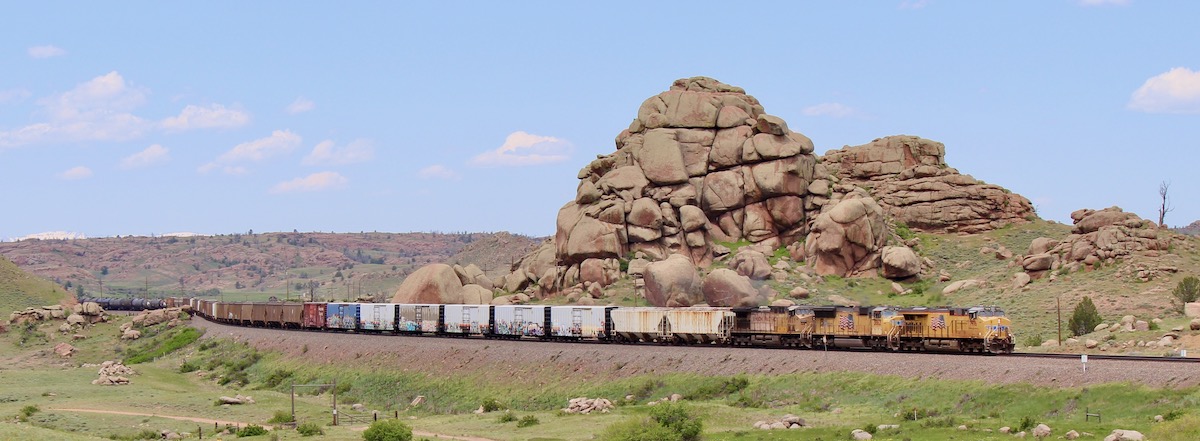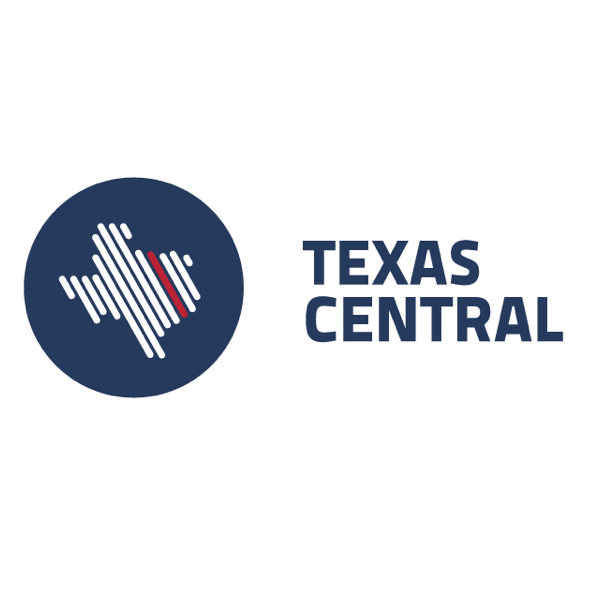
OMAHA, Neb. — Union Pacific will start metering traffic on Monday if shippers don’t voluntarily reduce their active freight-car inventories on the railroad, which is bogging down due to a combination of crew and locomotive shortages.
“Over the last few weeks, our network has experienced some setbacks – including numerous service interruptions, crew shortages in select areas and delays to our network – as we have seen our operating inventory continue to climb over the past 60 days. This additional inventory has led to more congestion in yards, an imbalance of our resources, and further slowdown of our operational performance,” Kenny Rocker, executive vice president of marketing and sales, wrote in a message to customers on Monday.
The railroad’s key performance metrics – including average train speed, terminal dwell, and number of trains held for crews and power – have trended in the wrong direction for most of this year.
UP is working to alleviate crew and power shortages.

“While the current demand for crews is high, we are facing a tight labor market,” Rocker wrote. “As I’ve noted before, we are recruiting heavily to alleviate crew shortages in certain locations and have modified our recruiting strategies to attract more applicants. We are aggressively hiring and streamlined our onboarding process to get new hires on the job faster.”
UP has 450 conductors in training who should enter active service in early summer, with more in the hiring pipeline. UP also has relocated 80 train-crew personnel to areas that are particularly short of crews.
UP’s crew headcount was up nearly 2% in February compared to a year ago, according to the latest Surface Transportation Board data. But traffic in the first quarter was up 4% compared to the same period in 2021, according to the railroad’s weekly carload report.
To alleviate power shortages, UP is pulling 100 locomotives out of storage. They will join 50 units added to the active fleet since January.
UP is removing up to 3% of railroad-controlled cars from the network. “We are in daily dialogue with our unit train customers to maintain fluidity and reduce their inventories on our system,” Rocker wrote. “For intermodal, we are closely monitoring the inland ramps to make sure our supply chain partners have [the] ability to dray their shipments off the ramps.”
Despite these efforts, the number of cars on the UP system continues to rise.
“We are now asking for your help to further reduce the number of active rail cars on our network. We have already identified and notified those customers who can help us manage the current congestion by reducing their rail car inventories,” Rocker wrote. “If we do not see reductions to the operating inventory through their voluntary efforts, then we will begin metering traffic after April 18th. This action, along with our other ongoing initiatives, will give us the ability to work through our backlog and improve the service for all our customers.”
Shippers typically add cars to their fleets as rail service slows, which tends to exacerbate congestion and delays.
The big four U.S. railroads – BNSF Railway, CSX Transportation, Norfolk Southern, and UP – are experiencing service problems to various degrees. Last week the STB ordered their executives to appear at a two-day hearing on service issues. The hearings will be held April 26 and 27.














Really, there are still a lot of stored units though out the system, maybe short on crews but not units
Back to basic, good customer service, period (We Can Handle It)
One thing for sure putting together these longer 150-200 trains take lots of time, a shorter 75-100 car train will run faster and more efficient, not tie up train yards cause the longer trains can’t fit and block crossings and back up trains behind them for HOURS or even DAYS. They have the equipment to do this and the man hours when you’re not wasting 2-3 hours in yards putting these longer trains together period!
Will they change their motto to. WE CAN’T HANDLE IT. ?
Still would like to know what exactly this “metering” is. Increase demurrage?
Blaming customers for having too many cars on the railroad?? Gee, I guess they don’t want my cars at all then.
The fact that UP has lots of stored power should tell anyone their railroad is not over run with traffic. Why on earth do they not connect with that fact? They need to move what they have and do it at track speed. None of that “do not exceed throttle 5”, etc. And, when you consider the time it takes to put together a 16,000 ft train———-. You can bet it takes a long time to assemble that. Cut it in half with another train that will be many miles down the road when the rest of it is being put together.
The railroads got billions of dollars of covid stimulus money to hold on to employees. Instead they cut back as much as they could and now want the customers to pay for bad management. The airlines did the same and can barely support their schedules. Lesson: next time don’t give my grandchildren’s money to already incredibly rich industries.
get rid of PSR and go back to real railroading. put the customer and their needs first. now the UP wants to screw the customer even further with this policy from problems the UP created in the first place.
Will they change their motto to WE CAN’T HANDLE IT?
This guy looks like so many other high level executives you could probably pull his picture from a stock photo archive. You know this guy wouldn’t know 5% of the operating rules or even the equipment that his ‘decisions’ call into effect. He’s nothing more than a token figurehead, as easily replaceable as a lightbulb, but only half as bright.
As an engineer at a class 1 railroad I can tell you what I see everyday. The railroad blames everything on manpower yet they create the manpower problems. They now force us to work upward of 250 hours a month so obviously they need to hire more people. The problem is they have such a bad reputation nobody wants to work there. They have record numbers of people with 10 plus years quitting because of the work conditions.
As for the problem of having too many rail cars and too much traffic they don’t even try to run trains. As someone mentioned the precision railroad has been a complete failure. They run trains with computer programs which run 25-30% slower than if an engineer was running. It’s common for a train to only use 40-50% of the available horsepower.
The manpower problem cannot be helped until the new hires are fully trained and available for service. However, it can be helped somewhat by the following.
Drop all restrictions on moving trains at max track speed. That includes no HP restrictions for running trains, sufficient HP on trains to operate at those speeds, drop the computer programs. That should reduce the number dog catch call outs. Reduce operating hours on duty so crews can be available for next call out. That will increase crews slightly.
Maybe when the meeting with the managements later this month the FEDs can tell them do it or else. Can the STB and FRA enforce it? Have no idea.
IMO these delays are contributing to inflation. That might get POTUS interested?
This is ALL about getting “1 man Crew’s” and reaping HUGE profits at the customer’s and publics expense. These RR’s, as Matt Rose former BNSF CEO stated concerning the mad rush to PSR, “will bring government regulations back from the 70’s”. They’re doing it to themselves.
Kudos….. Gary Caramella #5 above, cleverly said and so true
Normally I would be against government regulations, but seems Allan Jones offers a solution, “Time for STB and FRA to fix this PSR nonsense.” endmrw0412221919
The cynic in me thinks UP is rolling out the defense they plan to use during the STB rail service hearing in two weeks. 😏
STB is headed to re-regulation. All thishorse manure out of Omaha will make it happen all the faster.
I think the Class 1’s *want* regulation. Clearly they can’t deal with the Hedge Mafia, so they simply follow their wishes until the Feds step in and help them get pushed back. “Gee TCI, we can’t lower the ratio because the government requires this or that…so I guess you will have to sell your stock”
Regulation will get the Wall Street thugs off their back and when railroads aren’t stock darlings (in about 7-8 years) they will once again push to deregulate.
There is no way you can get a current Class 1 CEO (except BNSF of course) to say with a straight face that they had to fund stock buybacks instead using the capital to extend sidings for long trains.
This whole debacle marks the beginning of the end of the US railroad industry as we know it. Even if the Class Ones somehow miraculously get all these problems fixed no smart shipper is ever going to believe or trust them again. The railroads have just destroyed the environmental argument against building more oil pipelines. Now let’s build as many miles as we can and put the railroads out of that business. That should help reduce UP’s car inventory problem. And let’s spend massively to upgrade the inland waterways systems so we can transfer bulk commodities from rail to waterways. Eventually shippers can discover all kinds of viable options to stop using railroads. Let’s recreate the old AAR slogan so it now reads, “America’s Railroads Who Needs them? Nobody does!
So let me get this straight, UP is blaming its customers for its woes. Somewhere along the line, I heard an old saying that goes, “You can’t spell StUPid without UP.”
In all fairness to Mr. Rocker, he is being instructed by a higher-up. On the other hand, did Mr. Rocker ever spend any time out on the property? Managers of old came up through the ranks. Not any more.
More stupidity from UP.
1. There is no power shortage. There are plenty of units sitting in storage that could be pulled out and used. UP won’t do it because it might upset the stock holders.
2. Manpower shortage. Yeah there is one and it’s not because of a “tight” labor market. Its because UP had a horrible reputation. No other company hires employees, trains them, then furloughs them in a 6 month span and considers that business as usual. I was furloughed 2 months after hiring for 3 weeks, recalled to work for 1 week and then furloughed again. This shit happens all the time. Does UP really think that goes unnoticed by the community? No one goes to hiring sessions because they know it’s not worth giving up a steady job for UPs lies.
3. Customers are needing more cars because UP can’t get them there on time and can’t seem to keep em on the rails. How many major derailments was it in the last 2 weeks Kenny? Last I counted it was 8 derailments of at least 25 cars. Maybe UP should try maintaining its track.
You could probably put a number of the derailments on crewing but no way I can back up my assertion. Considering the massive scale of these trains and the skill it takes behind moving them you can’t help think that some of the derailments might or might not happen depending on an experienced crew and or recently new hire.
Recent new hires aren’t sitting in the right hand seat.
But you will have inexperienced engineers and new hire conductors. Receipt for more incidents. I would bet that somewhere you will have an almost new hire in the right seat with a brand-new conductor.
Train consist has a lot to play in derailments and trains breaking down. Got a cut of empty bulkhead flats followed by a nice helping of heavy tonnage trailing that cut. Not a good thing. I’ve watched many an excessively long train and seen how they are built and just shake my head. And these days the engineer ISN”T running the train. Trip Optimizer or Leader is. It’s interesting that on NS in the Elkhart area, when things become a complete mess, the engineers are instructed to manually run their trains. That in itself says enough.
Thor Odinson (above) denies UPRR is short of power. Thor is 100% correct. Butler Yard in Milwaukee is a parking lot for laid up UPRR locomotives.
My cat Burlington thinks UPRR smells like an unclean litter box.
Now the shippers have some real ammo. Time for STB and FRA to fix this PSR nonsense. This is now becoming IMO a national security problem. Is PSR slowing priority national rail shipments? That has to be looked into. Now no one can expect this PSR mess to be mitigated overnight but still???
Another item with UP’s 450 new conductors and who knows how many for other RRs that means many new engineers. Probably at least 1/2 the number of new conductors? Lack of experience operating with these new engineers is going to slow down trains and probably have a few incidents as well.
Anther help will be for trains to have more operating HP per trailing ton.
Positively Shoddy Railroading; blame your bread and butter customers for you being Uncommonly Pathetic.
I am laughing. A company bragging about getting more growth telling its customers to not send it business. STB take good notes.
This is beyond pathetic. Screw the customers, then screw them further. PSR will bring back government regulation of this dying industry.
What is “metering traffic”? The article mentions it twice without a definition. I am sure it’s not good!
I’d assume it’s demurrage.
The Union Pacific Railroad is pleading with shippers to help them reduce rail car inventory on their railroad. The company is a big proponent of Precision Scheduled Railroading. What is precision guided on the UP ? Nothing! PSR is just the old railroad operating rule of don’t dispatch a train until it is at maximum possible length. Long trains make big profits, short trains loose money. The cars wait and wait in rail yards before enough cars are gathered to dispatch a long train to a particular destination. Assume the train is now ready to move. It’s shear length facilitates and raises it’s propensity to suffer from breakdowns, traffic jams, and unsafe conditions. This is the magic of Precision Scheduled Railroading. The UP is now blaming their customers for causing fluidity problems
on their railroad. The sad part is that all the mega US railroads subscribe to PSR philosophy in the 21st Century. Shippers, search for ways to ship your goods some way other than by rail. Old management ways have returned to the executive suite in a new set of clothes.